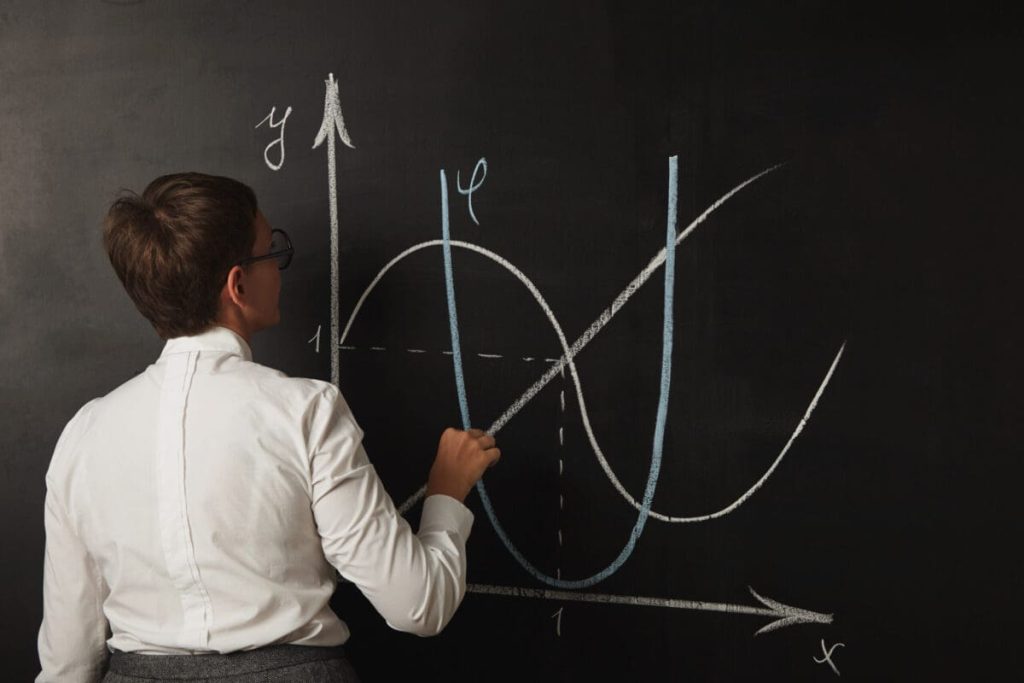Quadratic Functions

A quadratic function has the following generic form: f(x) = ax2 + bx + c. In general, a quadratic function, when graphed, looks like a parabola. When you set a quadratic function equal to zero, ax2 + bx + c = 0, you can determine where it crosses the x-axis. In algebra, the points where the parabola crosses the x-axis are called the solutions to the quadratic equation. There are only three options for these solutions:
- The parabola crosses the x-axis at two points, so there are two real solutions.
- The parabola crosses the x-axis at only 1 point (it will be the vertex of the parabola), so there is only one real solution.
- Finally, if the parabola doesn’t cross the x-axis at all, there are no real solutions. However, complex solutions can be found using the quadratic formula.
Consider the quadratic function f(x) = x2 + x – 2. The solutions to this function are the points on the x-axis where the parabola crosses. Basically, if there are any x-intercepts for the parabola, these are referred to as the solutions to the quadratic function when f(x) = 0. Using any of the following methods, we would be able to find that the solutions will be (-2, 0) and (1, 0).
- Graphing the quadratic function.
- Factoring the quadratic equation.
- Using the quadratic formula.
In the videos below, the instructor explains how quadratic functions work, how to find the solutions to quadratic equations, and the nature of real and complex solutions. A complete transcript and notes for these videos is provided here:
A quadratic function is graphically represented as a parabola on the coordinate plane. When a quadratic function is in the form 𝑎𝑥2+𝑏𝑥+𝑐 = 0 it is known as a quadratic equation. In this video, you will learn how to factor a quadratic equation in order to find its solutions (the points where the parabola crosses the x-axis). In order to provide a better foundation for the factoring method, a review of FOIL is also included.
Some quadratic equations are not so easily factored to find their solutions. In those cases, a method known as completing the square can be employed. The video below demonstrates this method of solving a quadratic equation.
The nature of quadratic equations has been explored for many centuries resulting in different tools to find their solutions. As demonstrated in the other videos, the solutions to a quadratic equation will be the points where the parabola crosses the x-axis. However, there are scenarios where we have parabola that don’t cross the x-axis. In these cases, there are no real solutions to the quadratic equation, but there are complex solutions. Complex solutions have both real and imaginary components. The video below demonstrates the famous quadratic formula that can be used to find both real and complex solutions of a quadratic equation.
